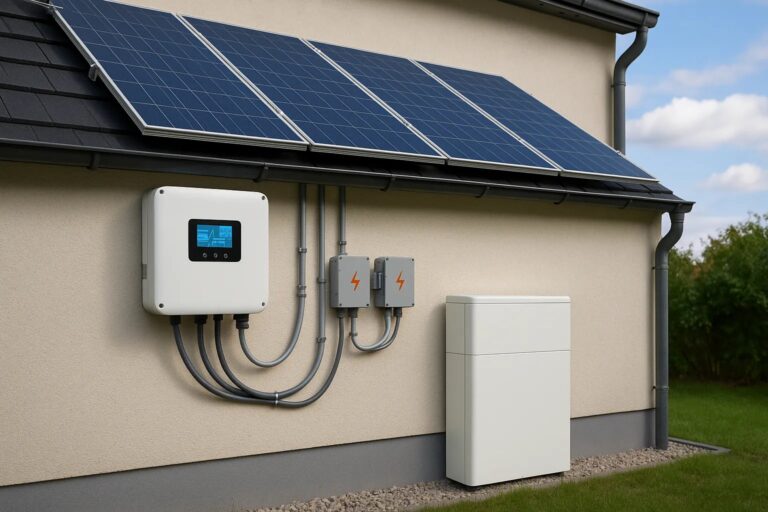The best solar battery for home energy independence in 2025 is one that combines high usable capacity, long cycle life, excellent round-trip efficiency, and a reliable warranty, with lithium iron phosphate (LiFePO₄) technology now dominating due to its safety and longevity.
Based on current data, Tesla Powerwall 3, Enphase IQ Battery 5P, and EG4 18kWh PowerPro are among the top choices. For most households, a capacity between 10–20 kWh covers evening and backup use, while depth of discharge (DoD) above 90% and efficiency over 95% are ideal.
According to the U.S. Energy Information Administration, residential solar installations paired with batteries grew 64% in 2024, and more than 18% of new U.S. solar homes now include storage, proving that energy independence is no longer niche.
But choosing the right battery isn’t just about brand – it’s about chemistry, integration, expected lifespan, warranty coverage, and your daily load needs.
Understand the Key Battery Types
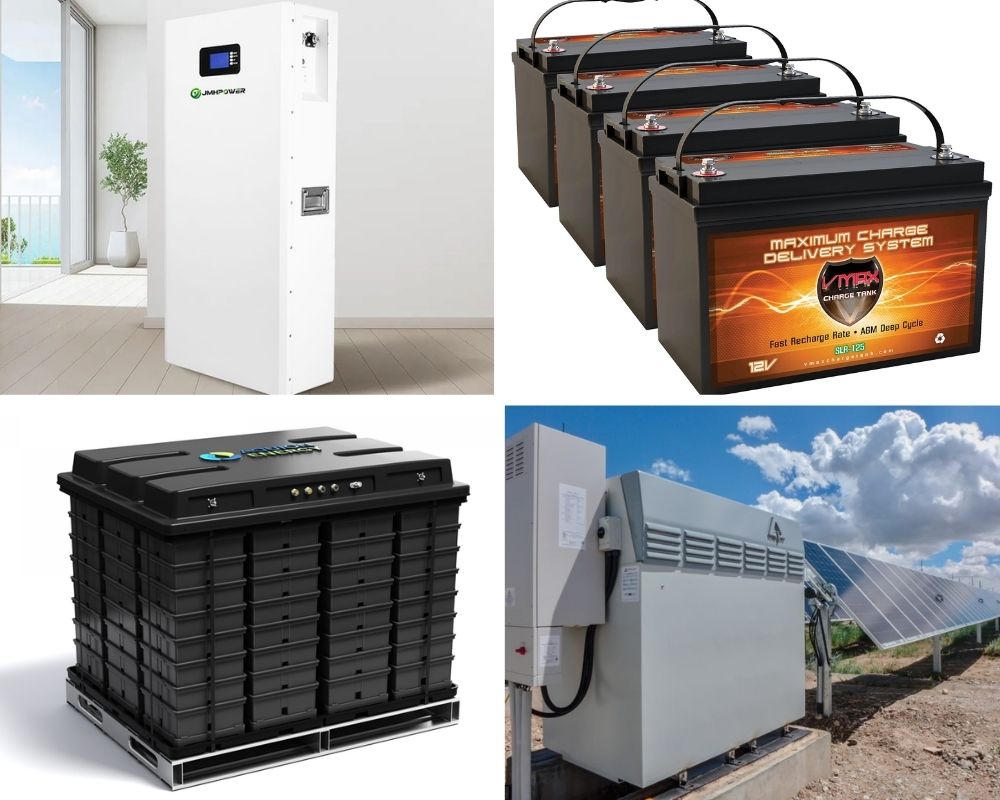
| Type | Common Chemistries | Lifespan (Cycles) | Cost/kWh | Pros | Cons |
| Lithium-ion | NMC, LFP (LiFePO₄) | 6,000–10,000 | $400–800 | High efficiency, compact, long life | Higher upfront cost |
| Lead-acid | Flooded, AGM, Gel | 500–1,200 | $150–300 | Low initial cost | Short lifespan, lower efficiency |
| Saltwater (Aquion) | Sodium-based | ~3,000 | $700+ | Non-toxic, recyclable | Low market availability |
| Flow batteries | Vanadium redox, Zinc | 10,000–15,000 | $600–1,200 | Long life, scalable | Large, not ideal for homes |
Today’s home energy storage market is dominated by lithium-ion batteries, especially those using lithium iron phosphate (LiFePO₄) chemistry.
These batteries are known for their high cycle life (often 6,000+ full charges), thermal stability, and minimal degradation over time. They’re compact and lightweight, making them ideal for residential installation.
Nickel Manganese Cobalt (NMC) lithium batteries, like older Tesla Powerwalls, offer higher energy density but have more thermal risk and a slightly shorter cycle life.
Lead-acid batteries, including flooded, AGM, and gel varieties, are the least expensive but also the least efficient and shortest-lived, often failing after 500–1,200 cycles.
Saltwater batteries, like the now-defunct Aquion models, are non-toxic and environmentally friendly but haven’t gained traction due to high cost and limited availability.
Flow batteries, though excellent for large-scale or long-duration storage, are still too large and expensive for most homes. For nearly every residential use case in 2025, lithium iron phosphate batteries strike the best balance of safety, lifespan, and performance.
Match Battery Size to Your Daily Energy Use
Your solar battery should cover your critical nighttime loads or power your home during grid outages. Most homes use 20–30 kWh/day, but backup needs often fall between 10–15 kWh/day.
| Appliance Group | Estimated Use (kWh/day) |
| Refrigerator | 1.5 |
| Lights (LED, whole home) | 1.2 |
| Wi-Fi + Router + TV | 0.5 |
| Washing Machine + Dryer | 2.0 |
| HVAC (high efficiency) | 3.0–5.0 |
| Electric oven + cooktop | 2.5 |
Selecting the correct battery capacity is one of the most important decisions for energy independence. A battery that’s too small won’t sustain your power needs during outages or cloudy days. One that’s too large will inflate your upfront cost unnecessarily.
The typical American household consumes between 20 and 30 kWh per day, but not all of that needs to be stored. Most homeowners use batteries to offset evening usage, provide backup during outages, or reduce peak utility charges.
In that case, a storage system in the 10–15 kWh range is often ideal. For example, if you want to run your refrigerator (1.5 kWh), lights (1.2 kWh), internet and devices (0.5 kWh), and HVAC (up to 5 kWh) during an overnight blackout, a 13 kWh system provides a safety buffer.
Households with high-demand appliances (electric vehicle chargers, electric water heaters, or full HVAC systems) may require 18–25 kWh of usable capacity to maintain comfort during off-grid periods. It’s also smart to consider seasonal usage – cooler or hotter months can cause spikes in heating or cooling demands.
Focus on Efficiency and Depth of Discharge (DoD)
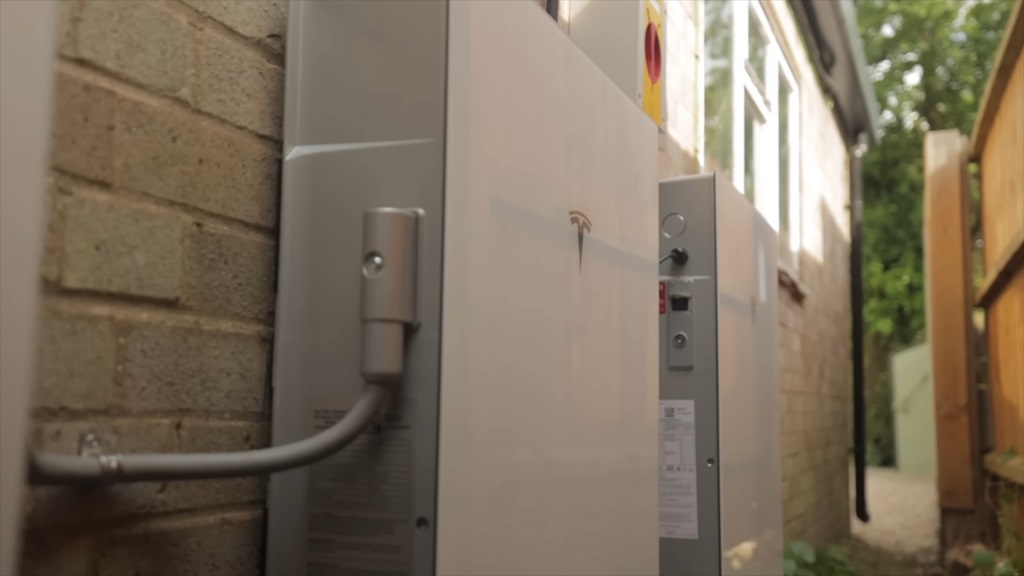
- Round-trip efficiency shows how much energy you get back after charging. Modern batteries like the Tesla Powerwall 3 and Enphase IQ 5P boast >97% efficiency, minimizing losses.
- DoD defines how much of the battery’s energy you can use. The best lithium batteries allow 100% DoD with minimal degradation.
| Battery Model | Efficiency | Usable DoD | Warranty (Years/Cycles) |
| Tesla Powerwall 3 | 97.5% | 100% | 10 years / Unlimited |
| Enphase IQ 5P | 96% | 100% | 15 years / 6,000 cycles |
| EG4 PowerPro 18kWh | 95% | 100% | 10 years / 7,000 cycles |
| Generac PWRcell M6 | 85% | 84% | 10 years / 6,500 cycles |
| Sonnen Eco | 90% | 90% | 10 years / 10,000 cycles |
Efficiency and usable energy capacity are two of the most important factors when evaluating a solar battery.
Round-trip efficiency measures how much energy you get back from the battery after charging losses. Top lithium batteries today – especially those using LiFePO₄ chemistry – achieve round-trip efficiencies of 95% to 98%, meaning you lose very little in the conversion process.
In contrast, older technologies like lead-acid batteries often fall below 85%, wasting more energy and offering less usable output.
Another key metric is Depth of Discharge (DoD), which tells you how much of the battery’s capacity can be used regularly without degrading performance.
While many batteries restrict you to 80% DoD, the best models now allow up to 100%, giving you full access to the energy you’ve stored. This not only maximizes daily utility but also extends the battery’s usable life over time.
Importantly, higher efficiency and deeper discharge capabilities also mean fewer emissions indirectly, since you’re making the most of your solar production and reducing how often you need to rely on the grid.
In that sense, choosing a high-performance battery is part of understanding your carbon footprint and actively shrinking it through smarter energy use.
Prioritize Warranty, Cycle Life, and Support
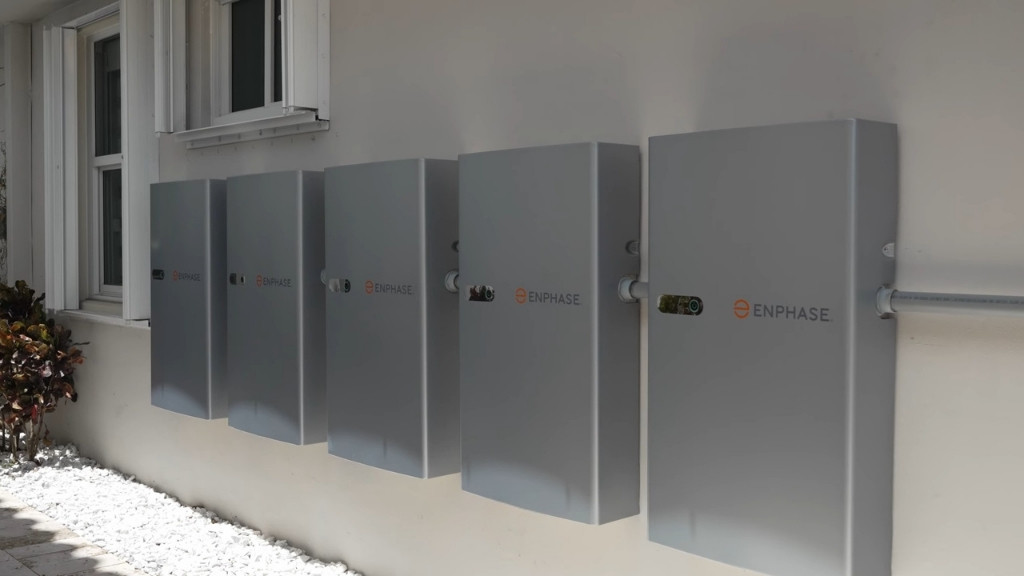
Warranties are crucial. Look for:
- 10-year minimum warranty
- At least 6,000 cycles
- Throughput guarantees (e.g., Tesla offers 37.8 MWh per unit)
A solar battery is a 10- to 15-year investment, and the warranty terms should reflect that. Manufacturers often promote long warranties, but it’s important to understand what’s being promised.
There are two key elements: calendar warranty (how many years the battery is covered) and cycle or throughput warranty (how many times it can be charged/discharged, or how many megawatt-hours it can store over its life).
A good battery should offer 6,000 to 10,000 cycles, which equates to daily use for 10–15 years.
Tesla’s Powerwall 3 has an unlimited cycle warranty for 10 years, meaning it doesn’t count how many times you use it – just the calendar years.
By contrast, many budget models provide only 2,500–4,000 cycles, which may wear out faster under daily use. It’s also essential to check the manufacturer’s support network.
Brands like Enphase and Tesla have strong service teams across the U.S., while niche or imported brands may lack certified installers or long-term parts availability, which can be a nightmare if repairs are needed.
Consider Integration With Your Solar Inverter and Smart Home
Some batteries are AC-coupled (easier to retrofit) while others are DC-coupled (more efficient in new builds).
| Coupling Type | Use Case | Pros | Cons |
| AC-coupled | Retrofitting solar | Easy install, brand flexibility | Slight energy loss (~3–5%) |
| DC-coupled | New solar + battery combo | Higher efficiency | Inverter compatibility needed |
How well your battery integrates with your existing or planned solar setup affects both performance and ease of installation.
Batteries are either AC-coupled or DC-coupled. AC-coupled systems convert electricity twice (DC to AC for storage, then back to DC for use), making them slightly less efficient. However, they are ideal for retrofitting to homes that already have solar panels and inverters installed.
DC-coupled batteries, on the other hand, maximize efficiency and are the best option for new solar + battery installations, but require inverter compatibility. For example, Tesla’s Powerwall is AC-coupled and works independently of your inverter brand, while the Enphase IQ Battery only integrates with Enphase microinverters.
Integration isn’t just about electricity – many batteries now come with smart software that allows you to track energy usage, set backup preferences, and respond to time-of-use rates from your utility.
Choosing a system that speaks to your smart home, whether through Tesla’s app or Enphase’s Enlighten, helps you automate and optimize your energy strategy.
Compare Cost Per kWh Over Lifetime
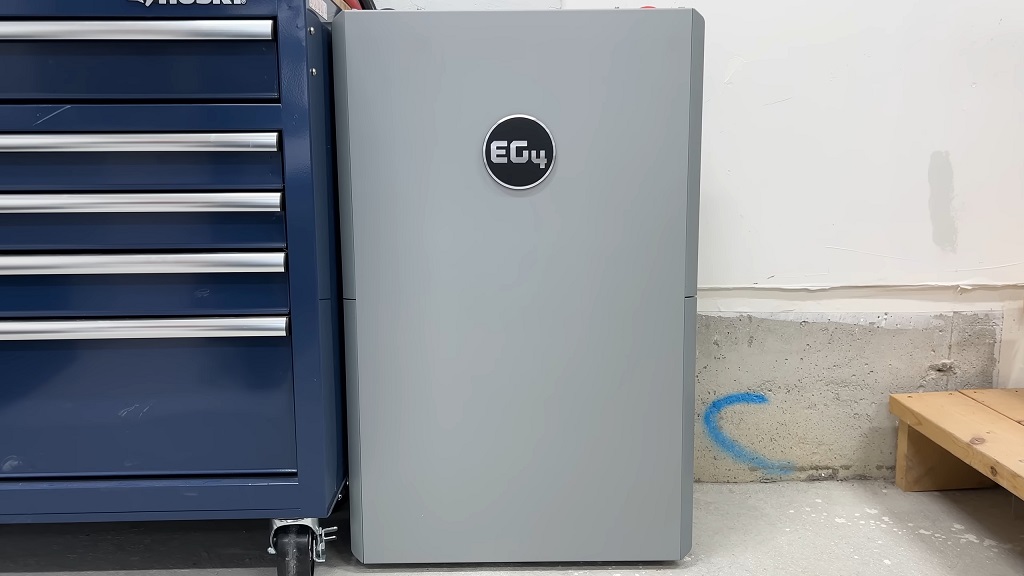
Don’t just look at upfront cost. Compare the cost per usable kWh over the life of the battery.
| Battery | Upfront Cost | Usable kWh | Lifetime (Cycles) | Lifetime Energy (kWh) | $/$/Lifetime kWh |
| Tesla Powerwall 3 | $9,200 | 13.5 | Unlimited (10 yr) | 135,000+ | $0.068 |
| Enphase IQ 5P | $5,500 | 5.0 | 6,000 | 30,000 | $0.183 |
| EG4 PowerPro | $8,500 | 18.0 | 7,000 | 126,000 | $0.067 |
| Generac PWRcell | $11,000 | 12.0 | 6,500 | 78,000 | $0.141 |
Upfront cost can be misleading when evaluating a battery’s real value. Instead, calculate the cost per lifetime kilowatt-hour, which shows how much you’re paying for each unit of energy the battery can store over its lifetime. This takes into account the usable capacity, number of charge cycles, and system efficiency.
For instance, the EG4 PowerPro offers 18 kWh of usable energy and 7,000 cycles, translating to 126,000 kWh over its life.
Priced at around $8,500, its cost per kWh is just $0.067, making it one of the most cost-efficient batteries available. Compare that to smaller batteries like the Enphase IQ 5P, which costs around $0.18 per kWh over its lifespan.
Batteries with higher upfront costs might still be more cost-effective in the long run if they offer more cycles, better DoD, and higher efficiency. Always include installation costs and incentives like the Federal Investment Tax Credit (ITC), which still offers 30% off the full system price for eligible homeowners in 2025.
Off-Grid or Backup Only?
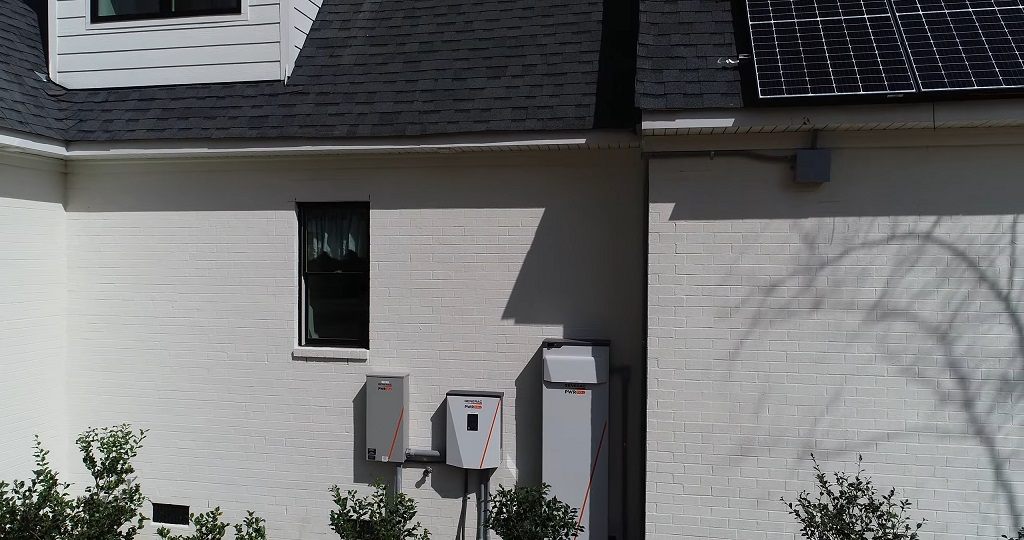
If your goal is full off-grid capability, you’ll need:
- Batteries + solar + backup generator
- 20+ kWh battery capacity
- Smart controls or load management
Your battery needs depend on how you plan to use it. For those seeking full off-grid independence, your battery must be large enough to cover all your power needs during cloudy days or periods of low solar generation.
This typically requires 20–30 kWh of storage, a solar array sized to your daily use, and often a backup generator for emergencies. Systems like the EG4 18kWh PowerPro or combining multiple Powerwalls can handle off-grid demands when paired with proper solar production.
For homeowners mainly looking to protect against outages, a 10–13 kWh battery can power essential loads – refrigeration, lights, communications, and fans – for 12 to 24 hours. In grid-tied homes, where the battery supports time-of-use shifting or demand response, a smaller size may suffice, especially when net metering policies are in place.
However, with utilities increasingly adopting non-export rules, having a well-sized battery is becoming critical for maximizing your solar investment.
Conclusion
For energy independence in 2025, lithium iron phosphate (LiFePO₄) batteries remain the clear choice due to safety, longevity, and efficiency. Choose a battery with:
- At least 90% usable capacity
- 6,000+ cycle warranty
- 95–98% round-trip efficiency
- Integration with your solar or inverter setup
- Low cost per lifetime kilowatt-hour
For most homes, the Tesla Powerwall 3, Enphase IQ 5P, and EG4 PowerPro deliver the best mix of performance, longevity, and value.
If your goal is full independence, aim for 18–25 kWh of storage with smart control systems. If your goal is just to survive outages, 10–13 kWh will do the job.

